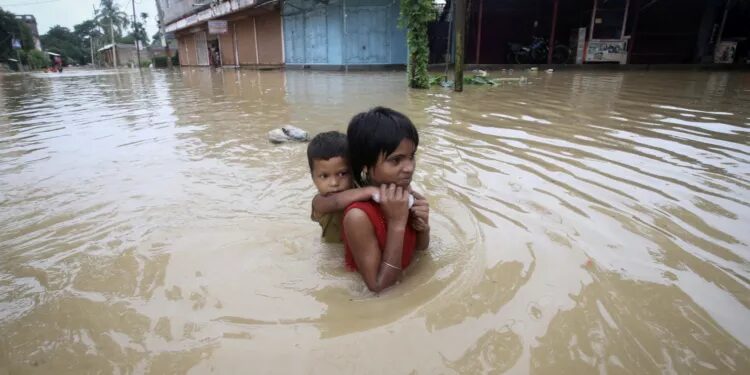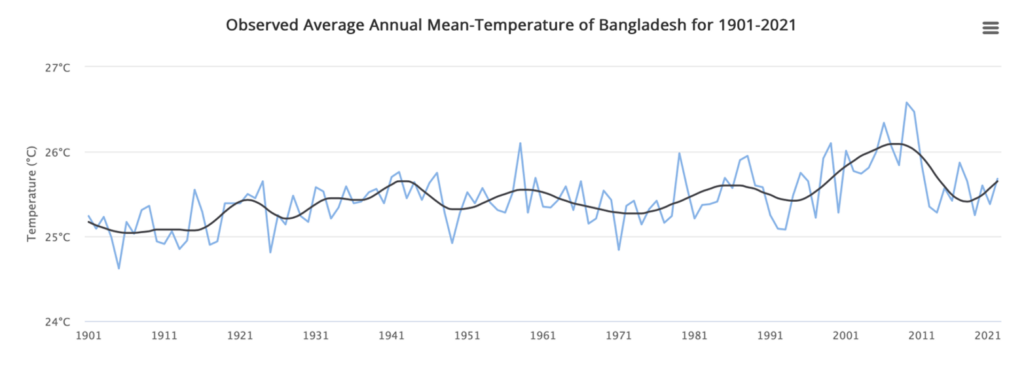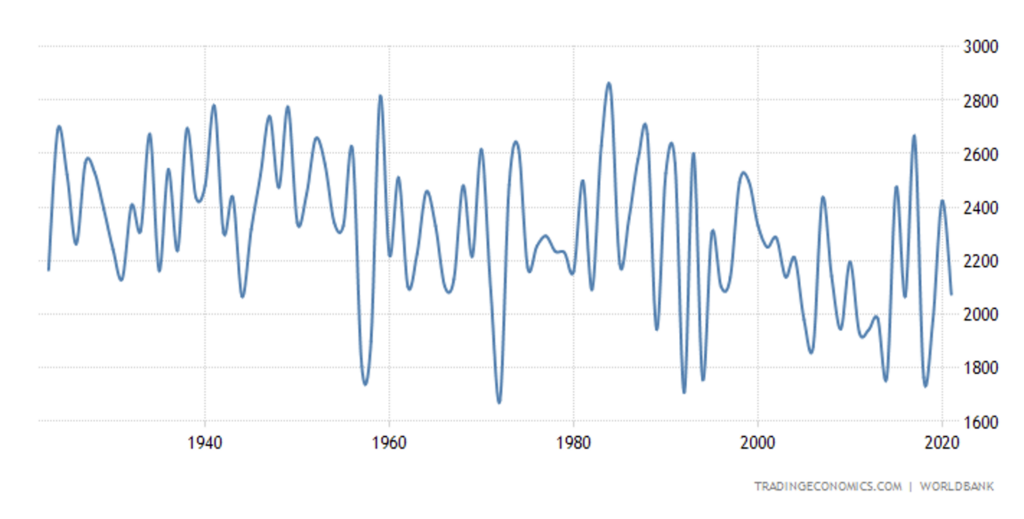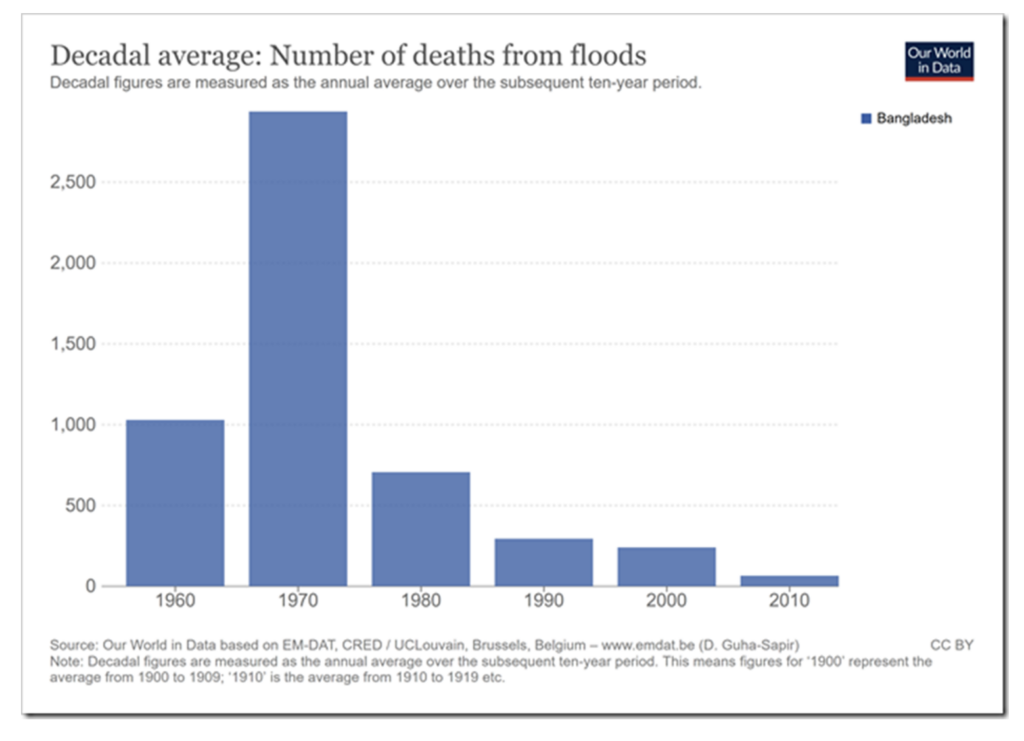Earlier this year, Bangladesh was hit by the regular monsoon rains and flooding. Sky News reported that "experts say that climate change is increasing the frequency, ferocity and unpredictability of floods in Bangladesh". Needless to say, the BBC made the same point, adding that "experts say that climate change is increasing the likelihood of events like this happening around the world".
Presumably, when they talk about climate change, Sky and the BBC are worried about flooding being caused by rising temperatures and increased rainfall. It might therefore be considered curious that these climate changes do not seem to have affected Bangladesh.
According to figures compiled for the World Bank, the average temperature in Bangladesh is the same today as it was 100 years ago. There are the usual cyclical changes, but global warming is not much in evidence around the Bay of Bengal.
Let's try rainfall.
Again according to the World Bank, we see little change in the overall trend going back 100 years. If anything, rainfall has slightly decreased, and there's certainly nothing unusual in the recent past. The graph shows that rainfall can vary widely between years. Severe monsoons in the past have caused enormous damage and heavy loss of life. Six catastrophic floods were recorded in the 19th century and 18 in the 20th. These days, hundreds of people can die in the flooding; in the past the figures could run into hundreds of thousands.
In a recent article in Climate Home News, it was said that Bangladeshis were dealing with wave after wave of climate chaos. The article "sponsored" by the international ngo Helvetas told its Western audience that one of the impacts of these disasters is "forced migration". Of course, this plays into another common climate scare, suggesting, without any discernible evidence, that huge numbers of people will become 'climate refugees' in the future, mostly from tropical areas, and inevitably seeking to move northwards to 'safety'.
Making Bangladesh a poster country for Western Armageddonites spreading the pseudoscientific notion that humans are causing the climate to radically change, does the country few favours. It is sited in many geographically fragile areas, and is prone to tropical cyclones. But over 160 million people are sustained by good agriculture, increased manufacturing development, and economic growth of around 6% per annum.
As countries become more prosperous, they can become more resilient in the face of what nature has always thrown at them. This appears to have happened in the case of Bangladesh, where the number of fatalities from flooding has significantly declined over the last 50 years. Surely, this is the good news story that should be spread in mainstream media, and probably would be if the climate change narrative was not embedded in every part of the discourse.
As we have reported throughout the year, it has been a disastrous period for climate alarmists preaching their gospel of doom to inflict a controlling Net Zero political agenda across the world. Global warming ran out of steam years ago, and no amount of 'adjusting' of surface temperature databases can hide that fact. Weather events are cyclical, and attributing any one event to human activity is model-driven junk science. Summer Arctic sea ice stopped declining over a decade ago, but David Attenborough still says it could all be gone by 2035. Polar bears, penguins and coral - all doing nicely thank you. More prosperous and healthier societies are learning to protect themselves against the ravages of Mother Nature. Small increases in carbon dioxide, otherwise known as plant food, continue to green up the planet, leading to higher food yields, reduced famine and healthier eco systems.
Happy eco-New Year to all my readers.
Chris Morrison is the Daily Sceptic's Environment Editor.







Change ya fucking shirt ya dirty old man.